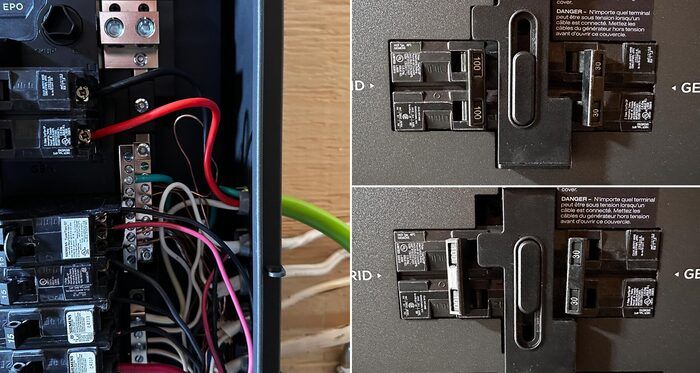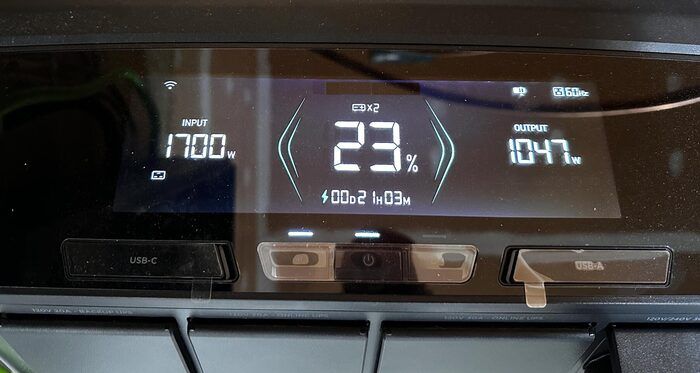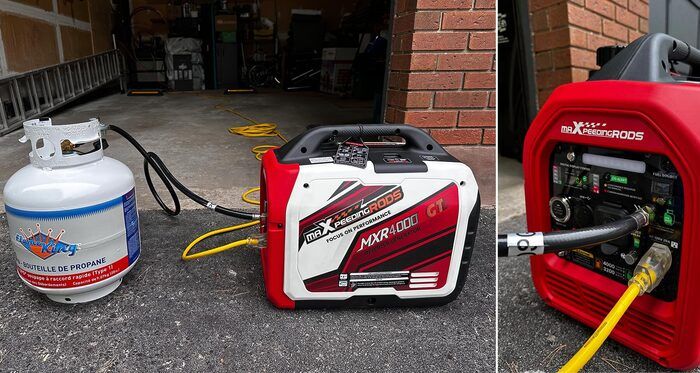Make the EcoFlow Delta Pro Ultra power your home & charge during an outage
If you’re wondering how to keep your EcoFlow Delta Pro Ultra charged during an extended power outage while it continues to power your home, this guide is for you.
I’ve installed the EcoFlow Smart Home Panel 2, the Delta Pro Ultra inverter, and accompanying battery system into my home in Ontario. I don’t yet have solar installed (though that’s on the roadmap) but I wanted a resilient home backup power solution after experiencing a devastating ice storm earlier this year that left us without electricity for more than four days. That blackout caused thousands of dollars in damage, and I knew we needed a better plan.
Why I chose EcoFlow
I didn’t want to rely on a large, noisy, fossil-fuel-guzzling generator. I was also drawn to the idea of building a system that could later integrate with solar power. After a lot of research, I chose the EcoFlow Delta Pro Ultra ecosystem.
An electrician helped install the Smart Panel 2 and moved key household circuits—like refrigeration, lighting, and essential outlets—over to the subpanel. Everything else was largely plug-and-play: I connected the inverter and batteries, and the system started working as intended.
Everyday use: saving money with time-of-use power
Even without an outage, this setup helps us save on electricity costs. We take advantage of Time-of-Use (TOU) pricing by charging the batteries during off-peak hours (when electricity is cheapest) and discharging them during peak hours (when rates are highest). With two batteries (12kWh total), we can power our critical circuits from 7 a.m. to 7 p.m.—precisely when summer electricity rates are at their most expensive. This means we effectively avoid paying peak prices on those circuits.
The problem: charging from a generator while powering the house
Here’s the challenge I ran into: under default settings, the EcoFlow Delta Pro Ultra cannot charge from a generator while simultaneously powering your house through the Smart Panel 2 using the primary in/out cable connector that also enables all the smarts. It’s an either/or scenario—either you’re powering the house or you’re charging the batteries, not both. That becomes a big issue during multi-day outages. Once your batteries run out, you’re in the dark again.
My goal was simple: use a generator to charge the Delta Pro Ultra’s batteries while it continues to power my home. Unfortunately, EcoFlow doesn’t officially support this via the main AC input/output connection—at least not through the proprietary 240V grid connection. After contacting EcoFlow support, I learned this is a built-in safety restriction.
Why I avoided connecting a generator directly to the Smart Panel
Although the Smart Panel 2 includes a dedicated generator hookup with an interlock switch, I chose not to use it. Here’s why:
• To directly power your home from a generator, you must overprovision the generator to exceed your total load.
• This approach wastes fuel and creates unnecessary noise, as the generator must run constantly at a higher wattage than you typically need.
• It’s far more efficient to charge the batteries, then let them power your home as needed.
Instead, I wanted a setup where the generator could trickle-charge the batteries efficiently—even using propane, which is quieter and cleaner—and let the batteries do the heavy lifting.
My workaround: charging and discharging simultaneously
Here’s the hack that works.
Step 1: use the Delta Pro Ultra in DC mode
I discovered that if you switch the Delta Pro Ultra into DC Mode, it can:
• Charge via the AC input port (C20 connector, up to 1800W)
• Discharge via the front-facing AC output ports simultaneously
Step 2: modify a generator cable
I took a short, 6-ft 30A 240V locking power cord (10-gauge, 4-prong SJTW) and wired it into the Smart Panel 2’s generator hookup. The other end plugs into the Delta Pro Ultra’s front-facing 240V 30A output.
Step 3: set up during an outage
When a power outage occurs:
1. The EcoFlow system automatically switches to battery power.
2. I safely shut down connected loads and disconnect the main grid in/out cable from the inverter.
3. I connect the modified 30A cable to the Smart Panel 2.
4. I flip the panel interlock switch to “Generator.”
5. I enable DC Mode on the Delta Pro Ultra.
6. I connect my portable generator to the Delta Pro Ultra’s AC input port and start it up.
My generator setup
I’m using a Maxpeedingrods 4000W / 3200W portable inverter generator, which delivers about 3000W on propane. This is ideal, as:
• The Delta Pro Ultra accepts up to 1800W of AC input through its C20 port.
• 1800W is more than my average household draw on these circuits during TOU mode.
• This means I can run the generator quietly and efficiently, while 100% of its output charges the batteries.
Why this setup works so well
This approach means I can:
• Use a smaller generator (less fuel, less noise, lower cost)
• Charge the batteries at an efficient and consistent rate
• Power my home from the batteries without interruption
• Extend battery runtime indefinitely by refueling the generator as needed
It’s the solution I hoped EcoFlow would support natively, and now that I’ve found a way around the limitation, I couldn’t be happier with the performance. The only major downside is loosing the connected smart data you get through the app when not connected via the primary in/out connector.
Potential considerations and limitations
• 1800W charging limit: If your average circuits consumption exceeds 1800W, the batteries will still drain—just slowly.
• Front output limit: The 240V port on the front outputs up to 7200W, but high loads will quickly deplete your batteries. Use the Circuit Priority feature in the EcoFlow app to manage this intelligently, or control the circuits manually using the app during an outage.
• Still worth it even with solar: Even with solar installed later, you may not always generate enough power in an outage. Having a generator as backup ensures continuity.
Final thoughts
This EcoFlow Delta Pro Ultra backup power setup with Smart Panel 2, batteries, and a dual-fuel generator gives me confidence during outages and saves money during normal operation. It’s efficient, quiet, scalable, and future-proof for solar.
If you’re investing in home battery backup systems, off-grid living, or emergency power setups, this solution may be exactly what you’re looking for.



